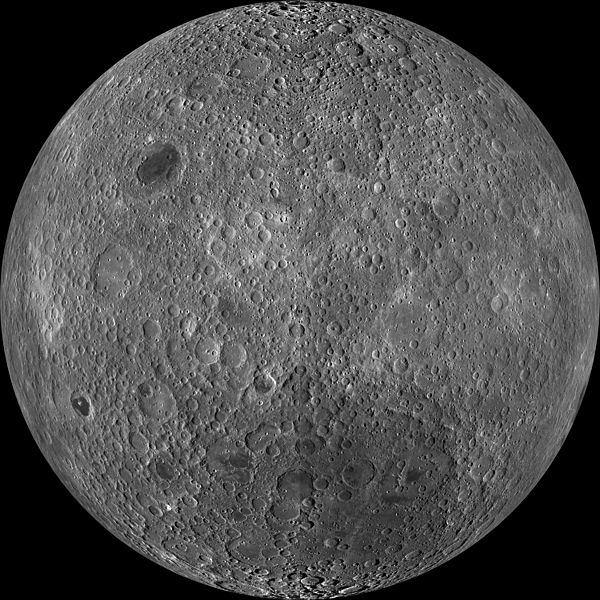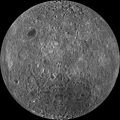Òbrôzk:Moon Farside LRO.jpg
Wygląd

Miara pòdzérkù – 600 × 600 pikslów. Jinszy rozdzélnotë: 240 × 240 pikslów | 480 × 480 pikslów | 768 × 768 pikslów | 1024 × 1024 pikslów | 2048 × 2048 pikslów | 18 000 × 18 000 pikslów.
Pierwòtny lopk (18 000 × 18 000 pikslów, miara lopka: 85,34 MB, ôrt MIME: image/jpeg)
Historëjô lopka
Klëkni na datum/czas, abë òbaczëc jak wëzdrzôł lopk w tim czasu.
| Datum/Czas | Miniatura | Miara | Brëkòwnik | Òpisënk | |
|---|---|---|---|---|---|
| aktualny | 00:47, 20 str 2014 |  | 18 000 × 18 000 (85,34 MB) | Huntster | High resolution mosaic. |
| 05:12, 9 łżë 2011 |  | 1600 × 1600 (1,44 MB) | Bubba73 | {{Information |Description ={{en|1=Far side of the Moon, by NASA's Lunar Recon. Orbiter}} |Source =http://apod.nasa.gov/apod/image/1104/farside_lro1600.jpg |Author =NASA - LRO |Date =2011? |Permission = |other_versions = } |
Lënczi do lopka
Niżódnô starna nie lënkùje do negò lopka.
Globalné wëzwëskanié lopka
Nene lopk je téż brëkòwnóny w jinnych ùdbach Wiki:
- Wëzwëskanié w af.wikipedia.org
- Wëzwëskanié w az.wikipedia.org
- Wëzwëskanié w be.wikipedia.org
- Wëzwëskanié w bjn.wikipedia.org
- Wëzwëskanié w bn.wikipedia.org
- Wëzwëskanié w bs.wikipedia.org
- Wëzwëskanié w ca.wikipedia.org
- Wëzwëskanié w cs.wikipedia.org
- Wëzwëskanié w de.wikipedia.org
- Wëzwëskanié w en.wikipedia.org
- Wëzwëskanié w en.wikibooks.org
- Wëzwëskanié w en.wikiversity.org
- Solar System, technical/Moon
- User:Marshallsumter/Radiation astronomy2/Visuals
- Draft:Original research/Planets
- User:Marshallsumter/Radiation astronomy2/Visuals/Quiz
- User:Marshallsumter/Rocks/Rocky objects/Astronomy
- User:Marshallsumter/Radiation astronomy/Courses/Principles/Hourly 2
- User:Marshallsumter/Radiation astronomy/Courses/Principles/Midterm quiz
- User:Marshallsumter/Radiation astronomy/Courses/Principles/Final quiz
- Titan/Quiz
- User:Marshallsumter/Rocks/Rocky objects
- Draft:Enceladus/Quiz
- Moon/Quiz
- Stars/Sun/Heliology/Quiz
- Earth/Quiz
- Stars/Reds/Quiz
- Draft:Dione/Quiz
- User:Marshallsumter/Radiation astronomy2/Scattered disks/Quiz
- User:Marshallsumter/Radiation astronomy1/Kuiper belts/Quiz
- Liquids/Liquid objects/Moon
- User:Marshallsumter/Radiation astronomy/Craters
- Wëzwëskanié w es.wikipedia.org
Pòkôżë lëstã glonal;negò brëkwaniô negò lopka.


